What types of projects does MnSHIP consider?
The investment in MnSHIP is allocated into twelve different categories that are organized by five of the Statewide Multimodal Transportation Plan objective areas:
System Stewardship
Climate Action
Transportation Safety
Critical Connections
Healthy Equitable Communities
The MnSHIP planning process will determine how much investment will be directed toward each category.
A range of potential investment amounts are identified in each of the folios below. Through the MnSHIP process, a combination of different investment levels has been combined into plausible investment approaches to help stakeholders and decision-makers understand outcomes, risks, and system investment strategies at projected revenues.
For more information on each investment category, click on the category name below!
Pavement Condition
What is pavement condition?
MnDOT maintains over 11,703 miles of state highways that serve vehicles, freight, transit, bicycle users, and pedestrians. This category provides funding for pavement maintenance, repair, resurfacing and reconstruction on all state roadways. This is the largest investment category, accounting for 43% of the total budget.
Why is it important?
Pavement deterioration is a serious long-term risk to the state highway system. The majority of Minnesota’s highways were originally constructed between 60 and 70 years ago. Pavements generally need to be fully reconstructed every 50 years. Additional investment is needed to continue to maintain the current condition of pavements. MnDOT also needs to make minor repairs on regular intervals to prolong pavement life and reduce total life-cycle costs. MnDOT is better able to fulfill its responsibilities as stewards of the highway system by making the proper fix at the proper time.
Example Improvements
Pavement repair and maintenance
Roadway resurfacing
Roadway reconstruction
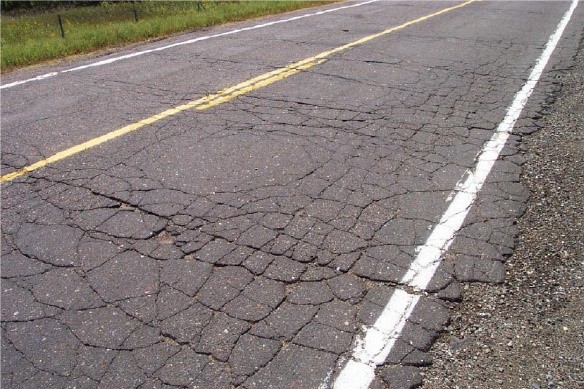
What is the current approach?
Based on continuing the 2017 MnSHIP investment direction, MnDOT currently plans to spend about $13.5 billion on projects in this category over the next 20 years, or 43% of the total budget. However, even at this level of investment, pavements are predicted to worsen over the next 20 years.
Additional Information
Additional information on the Pavement Condition investment category can be found in the investment category informational folio below.
Bridge Condition
What is bridge condition?
Bridge Condition projects include repairs and replacement of existing bridges to ensure our system remains safe and reliable. This category includes investment in vehicle bridges, railroad bridges, tunnels, and culverts longer than ten feet.
Why is it important?
Bridges are one of the most important types of infrastructure on the state highway system. There are approximately 20,000 bridges in the state of Minnesota, with over 4,500 of these bridges under MnDOT jurisdiction. Proactive, preventive maintenance helps maximize the service life of bridges, while delaying maintenance may mean some bridges need to be closed or restricted.
Example Improvements
Structural Repair
Bridge Replacement
Redecking and re-surfacing
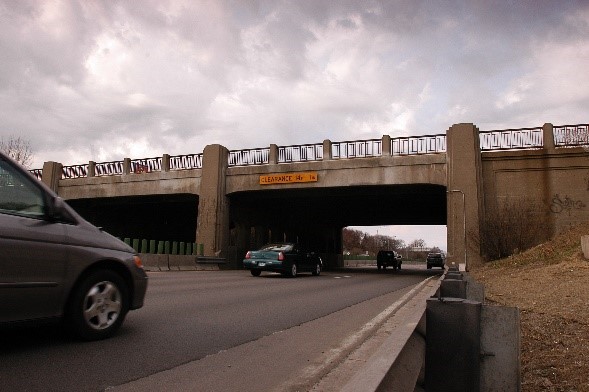
What is the current approach?
MnDOT currently plans to spend $5.2 Billion on projects in this category over the next 20 years, or 16.4% of the total budget. However, even at this level of investment, bridges are predicted to worsen over the next 20 years.
Additional Information
Additional information on the Bridge Condition investment category can be found in the investment category informational folio below.
Roadside Infrastructure
What is roadside infrastructure?
Roadside Infrastructure refers to non-pavement and non-bridge parts of the state highway system, including lighting, stormwater tunnels, traffic signals, signs, and noise walls. This category dedicates funding to repairing and replacing those items as needed.
Why is it important?
Maintaining roadside infrastructure is critical to ensuring that roadways remain safe and efficient. Functional guardrails, rumble strips, signs, and stormwater drainage help reduce crashes, manage bad weather, and ensure drivers find their way safely to destinations.
Example Improvements
Culverts, storm sewer systems, and other drainage
Traffic signals, lighting, and Intelligent Transportation Systems (ITS)
Highways signs and sign structures including traffic and directional signs
Noise walls
Pavement markings
Guardrail and concrete barriers, including cable-median barriers
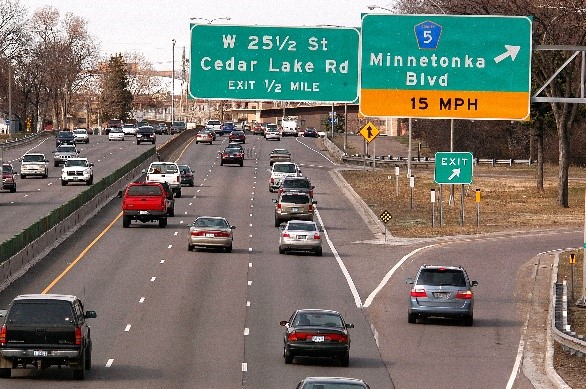
What is the current approach?
MnDOT currently plans to spend $2.5 billion on projects in this category over the next 20 years, or 7.9% of the total budget. However, even at this level of investment, many types of other infrastructure on the state highway system are predicted to worsen over the next 20 years.
Additional Information
Additional information on the Roadside Infrastructure investment category can be found in the investment category informational folio below.
Rest Areas
What are rest areas?
The State of Minnesota owns and operates 51 rest area buildings, sites, and parking lots. This category includes funding to maintain or reconstruct these sites as necessary.
Why are they important?
Rest areas serve as a safe place for drowsy drivers and are essential safety features on the highway system that help address driver fatigue, a major cause of serious accidents. Their basic service is crash prevention. Studies reveal that a 15 to 20-minute break improves driver’s performance, even among sleep-deprived people.
Example Improvements
Rest Area building renovations
Pavement repairs to parking areas
Site amenities including picnic tables and paths
Making and maintaining buildings and sites accessible to people with disabilities
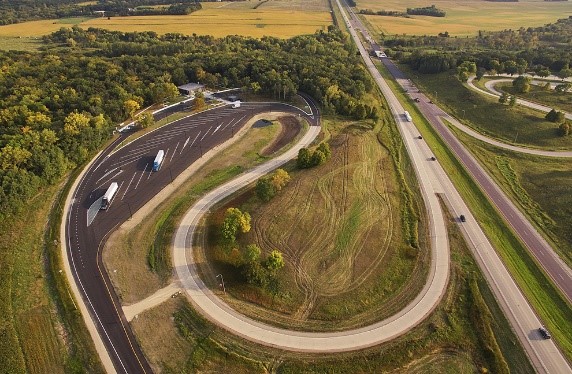
What is the current approach?
MnDOT currently plans to spend $100 million on projects in this category over the next 20 years, or 0.3% of the total budget. However, with current levels of investment, the number of rest areas in poor condition needing a reconstruction or renovation doubles from 6 buildings to 12 buildings by 2042. The number of rest area parking lots and sites deteriorating to poor conditions and in need of improvements increases to 28 rest areas sites.
Additional Information
Additional information on the Rest Area investment category can be found in the investment category informational folio below.
Climate Resilience
What is climate resilience?
As the climate continues to warm, increased extreme weather will make it more difficult to maintain the state’s roads. This category includes strategies to adapt infrastructure to mitigate the impact of extreme weather, as well as reestablishing native habitats.
This category includes funding from the PROTECT Program for investing in climate resilience improvements to infrastructure. This program was recently created in the new federal transportation infrastructure bill, the Infrastructure Investment and Jobs Act.
Why is it important?
Transportation is one of the largest contributors to global warming and to native habitat loss. It is important that Minnesota pursues strategies to reduce transportation emissions and mitigate those impacts to reduce the overall impact on the environment.
Example Improvements
Using native plantings along roadways and replacing trees removed during construction projects
Providing more tree plantings and other green infrastructure along state highways in urban areas
Implementing flood mitigation projects along segments with known flooding issues
Improving the resilience of state highway infrastructure in the face of extreme weather
Constructing snow fences helping to prevent snow accumulation on roadways
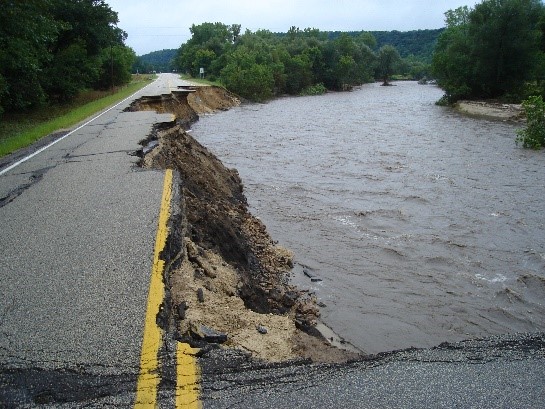
What is the current approach?
MnDOT currently plans to spend $166 million on projects in this category over the next 20 years, or 0.5% of the total budget. This would complete two existing flood mitigation projects and 5-10 climate resilient infrastructure improvements per year from the PROTECT program through 2026. It also provides a limited amount of new snow fences at priority locations as well as continuing native plantings and tree replacements with future highway projects.
Additional Information
Additional information on the Climate Resilience investment category can be found in the investment category informational folio below.
Transportation Safety
What is transportation safety?
The State of Minnesota has made reducing fatalities and serious injuries a top priority through the Toward Zero Deaths initiative (TZD) (www.minnesotatzd.org). The Transportation Safety category is primarily focused on design and engineering strategies that make biking, walking, and driving safer all over the state.
Why is it important?
Vehicle crashes are the leading cause of death for people under the age of 35, and the second leading cause of death overall in the nation. Preliminary data show that more than one person died every day in 2020 on Minnesota roads (394) and more than four were seriously injured. Of those traffic deaths, 46 were pedestrians and 10 were bicyclists. Unlike motor vehicle fatalities, which saw a spike in 2020, pedestrian and bicyclist deaths have seen a steady increase in Minnesota and nationwide over the previous decade. While crash rates increased in 2020, crashes have steadily declined over the previous 40 years, and engineering improvements on the system played a key role in reducing highway deaths and serious injuries.
Example Improvements
New rumble strips, guardrails and improved pavement markings
Added intersection improvements such as new turn lanes or roundabouts
Pedestrian and bicycle facilities such as new/improved crossings or curb extensions
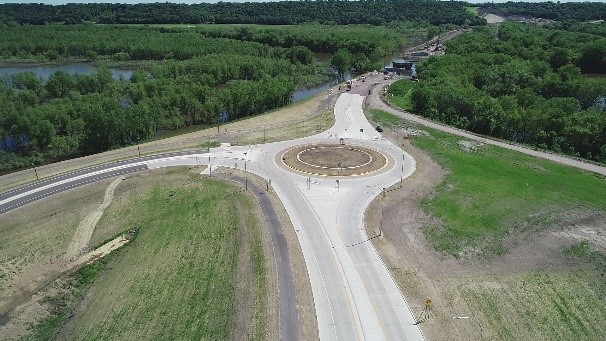
What is the current approach?
MnDOT currently plans to spend $838 million on projects in this category over the next 20 years, or 2.7% of the total budget. This would allow for continued new safety improvements as a part of pavement projects and up to 140 standalone safety projects by 2042.
Additional Information
Additional information on the Transportation Safety investment category can be found in the investment category informational folio below.
Advancing Technology
What is advancing technology?
Technology has radically transformed transportation over the past 200 years, from the Model-T to self-driving cars. Advancing technology investments will be focused on preparing for the next generation of transportation technology. This includes installing things like communications networks, fiber, and traffic signals that communicate with connected and autonomous vehicles so that Minnesota can harness and benefit from technological advances.
Why is it important?
New transportation technologies have the ability to make our roads safer and more reliable for everyone. Without investment in this category, Minnesota runs the risk of falling behind other parts of the country and becoming less economically competitive.
Example Improvements
Upgrading of signals that communicate with a central management system and provide awareness of crossing walkers and bicyclists
Expansion of the underground fiber network
Expansion of new technology infrastructure to more corridors in the state
Pilot projects implementing technology support for connected freight and transit vehicles
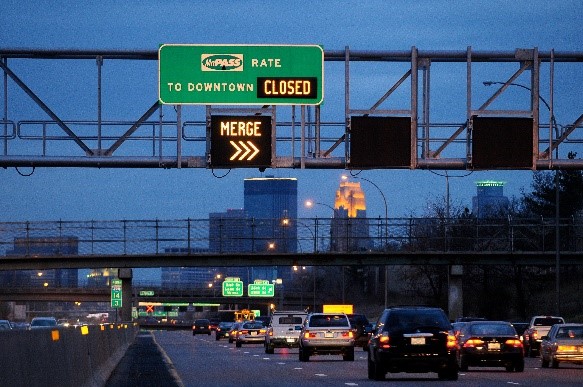
What is the current approach?
MnDOT currently plans to spend $25 million on projects in this category, or 0.1% of the total budget. This investment would allow MnDOT to complete projects already committed to in the next four years.
Additional Information
Additional information on the Advancing Technology investment category can be found in the investment category informational folio below.
Highway Mobility
What is highway mobility?
The Highway Mobility investment category focuses on improving the movement of people and freight on the National Highway System (NHS), the priority network for the Minnesota State Highway Investment Plan. The system totals more than 5,200 miles of roadway in Minnesota, with approximately 58 percent in the Twin Cities and 42 percent in Greater Minnesota.
Why is it important?
Minnesota added just over 400,000 residents statewide between 2010 and 2020, with much of this growth taking place in the Twin Cities region. This places greater demand on the existing highway system, creating the need for improvements to make sure the system remains safe, reliable, and efficient. At the same time, the state has a goal to continually reduce emissions. Highway mobility investments can work toward both goals by helping smooth traffic flow and enhance the attractiveness of potentially less energy-intensive modes, such as bus service on shoulder lanes and other special-purpose facilities like managed lanes.
Example Improvements
Expanding infrastructure such as traffic camera, dynamic message signs, and ramp meters
Expanded bus shoulder/ramp projects along state highways
Intersection or Interchange improvements
Managed lane projects (E-ZPass)
Increased roadway capacity
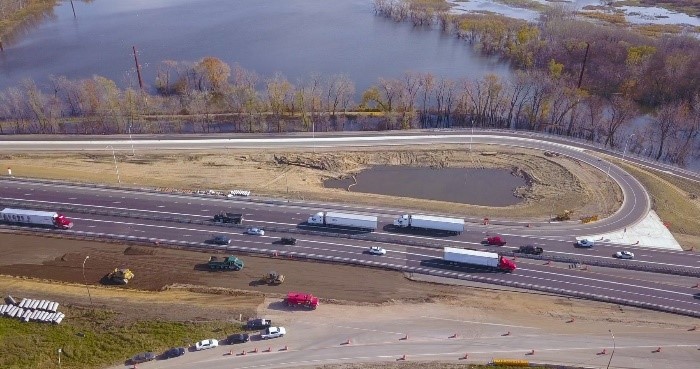
What is the current approach?
MnDOT currently plans to spend $639 million on projects in this category over the next 20 years, or 2.0% of the total budget. This would allow MnDOT to invest in up to 5 spot mobility projects in Greater Minnesota. In the Metro area, improvements would include up to 68 spot mobility improvements, implement managed lanes on MN 252/I-94 and I-494, maintain existing traffic management system and expand bus-only shoulder system by up to 50 miles.
Additional Information
Additional information on the Highway Mobility investment category can be found in the investment category informational folio below.
Freight
What is freight?
The Freight investment category includes investments to improve the reliability, efficiency, and safety of freight truck movement on the state’s highway network.
Why is it important?
Many Minnesota industries rely heavily on a safe, reliable, and efficient highway system to connect to customers, import raw materials, and deliver goods and services. By 2040, the amount of freight tonnage moved by trucks is predicted to nearly double based on increasing population and the importance of e-commerce. The most common issues identified in conversations with the freight industry are poor pavement conditions, inefficient interchanges and inadequate roadway capacity.
Example Improvements
Addressing freight congestion bottlenecks
Truck weigh stations improvements
Replace and improve equipment at at-grade rail crossings
Expand truck parking at rest areas
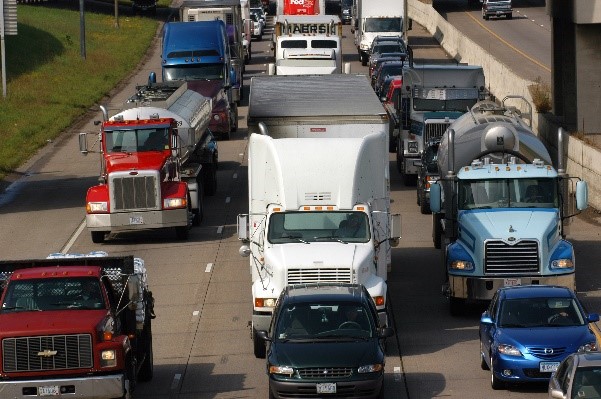
What is the current approach?
MnDOT currently plans to spend $587 million on projects in this category over the next 20 years, or 1.9% of the total budget. This would fund up to 100 freight safety or first/last mile improvements. Three railroad crossings will be maintained per year and one passive crossing would be upgraded to an active crossing per year. Three weigh stations would become obsolete by 2042.
Additional Information
Additional information on the Freight investment category can be found in the investment category informational folio below.
Pedestrian and Bicycle
What is pedestrian and bicycle?
Pedestrian and Bicycle investments provide places for people to walk, bike, and roll safely along and across state highways. MnDOT follows a complete streets approach, meaning each project must evaluate options to provide for and balance the needs of all roadway users, including cyclists and pedestrians.
Why is it important?
Everyone is a pedestrian – whether your main form of transport is a motor vehicle, bus, train, van, or bicycle, and whether you travel on your feet or use an assistive device. The 1990 Americans with Disabilities Act (ADA) requires MnDOT to provide accessible transportation alternatives for those using a wheelchair or other assistive devices. It is also a state transportation goal “To promote and increase bicycling and walking as a percentage of all trips as energy-efficient, nonpolluting, and healthy forms of transportation."
Example Improvements
Improve existing pedestrian infrastructure to meet ADA standards
Complete sidewalk networks
Pedestrian signals
Pedestrian bridges
Maintain shared use paths and trails along and across the state highway system
Bicycle lanes and separated bicycle facilities
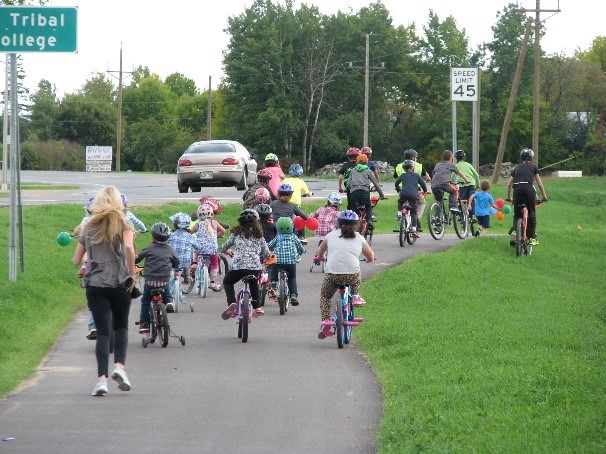
What is the current approach?
MnDOT currently plans to spend $700 million on projects in this category over the next 20 years, or 2.2% of the total budget. With current funding levels, MnDOT would address all non-ADA compliant curb ramps, sidewalks, and pedestrian signals by 2037. MnDOT would also add 100-150 miles of new sidewalks in high priority locations including 200-250 intersection improvements. Up to 10 pedestrian bridges would be improved to meet ADA compliance.
Bicycle improvements would include 50 miles of bicycle lanes and 5-10 miles of separated bicycle facilities in urban areas. Up to 5 miles of improvements would also be included in rural areas.
Additional Information
Additional information on the Pedestrian and Bicycle investment category can be found in the investment category informational folio below.
Local Partnerships
What are local partnerships?
The Local Partnerships category incorporates strategies and programs that involve local collaboration and planning. Investments include projects important to local communities, such as landscaping/beautification projects, improvements supporting economic development, and improvements that help to integrate the highway into the local community and improve livability.
Why are they important?
Local Partnerships help ensure that MnDOT and local communities are delivering a well-rounded transportation system that works toward both statewide and local goals for economic competitiveness, quality of life and community livability.
Through the Jurisdictional Transfer program, MnDOT and local partners can better align roadway ownership as it makes sense. For example, there are several low-volume segments of road that are a lower priority for funding compared to other state highways. In that case, it may take a while for it to be repaired or upgraded. However, regionally, the road segment might be significant, and transferring ownership could allow a local jurisdiction to better meet customer expectations.
Example Improvements
Funding roadway ownership transfers with cities and countries
Partnering with cities/counties to address local priorities
Providing state match for projects funded through outside funding including federal solicitation programs
Partnering with local communities on landscape and beautification projects
Transportation economic development (TED) projects
What is the current approach?
MnDOT currently plans to spend $837 million on projects in this category over the next 20 years, or 2.3% of the total budget.
Additional Information
Additional information on the Local Partnerships investment category can be found in the investment category informational folio below.
Main Street/Urban Pavements
What is main street/urban pavements?
Main Streets-Urban Pavements is a new category in this update to MnSHIP. Investment in Main Streets-Urban Pavements provides additional funding for projects in urban areas to deliver more improvements along state highways. This includes segments of the state highway that are non-freeways and function both as a state highway and as a city street in an urban context.
Why are they important?
Investing in reconstruction of urban pavements provides the opportunity to coordinate with local governments to address water and sewer system infrastructure as well as transportation infrastructure. Main Streets-Urban Pavements investment also facilitates more complete fixes to bicycle and pedestrian infrastructure, including projects that are local priorities.
Example Improvements
Upgrading existing planned pavement projects to full reconstructions
Adding new urban pavement projects beyond those selected through Pavement Condition
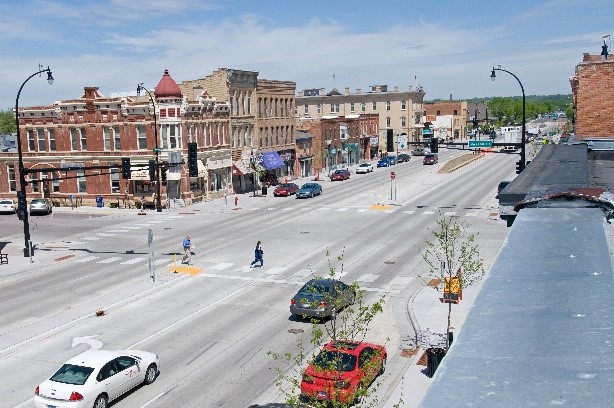
What is the current approach?
MnDOT currently plans to spend $0 on upgrading existing planned pavement projects or adding new urban pavement project in this category. MnDOT would still complete urban pavement projects through the Pavement Condition investment.
Additional Information
Additional information on the Main Streets/Urban Pavements investment category can be found in the investment category informational folio below.
